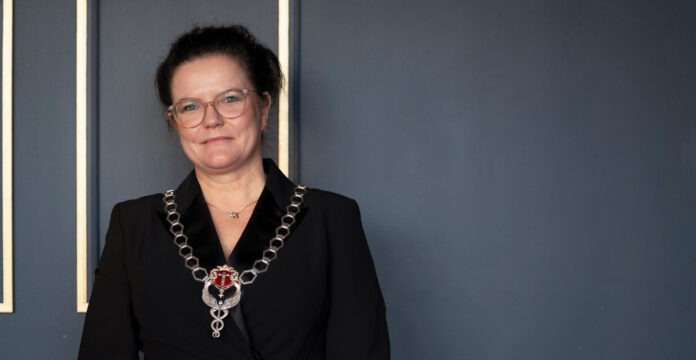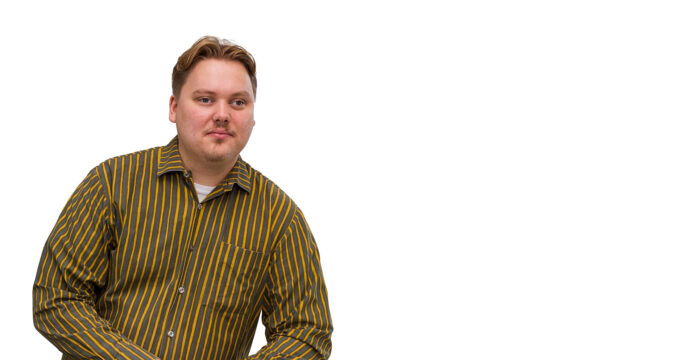To start with, a few words about the timing and schedule of our strategy process. Recently appointed University of Vaasa Scientific Board had its first meeting on the 21st of December in Vaasa. During the meeting the board got a briefing of the current situation at our university as well as the on-going strategy process. We had a most useful discussion with the board based on the day’s presentations and comprehensive set of materials provided for the board prior to the meeting.
The next meeting of the board will be on the 26th of January and we will then receive more detailed feedback on the strategy process from the board. We are also planning to organise one or more sessions where the university community will have a chance to interact with the board. More information about these meetings and other strategy events for the community will be provided, once we have confirmed the schedule. In any case, we will have new strategic plans in place towards the end of March 2017 and implementation of the new strategy will commence in August this year. We look forward to have an eventful year ahead of us. Brave and exciting strategic openings will be worked together and published during the coming months.
During the course of the strategy process we have developed a division of labour between myself and vice rector, professor Jukka Vesalainen. While Jukka has concentrated on the university strategy from inside out perspective built on the basis of numerous workshops, my own focus has been mostly on the external environment of the university. The aim is to create a balanced renewal strategy that embraces new opportunities and utilises existing strengths also in new areas. During the past 12 months period we have developed a profound understanding that in the changing world past success will not guarantee successful future. The following section lays out some key issues, trends, challenges and opportunities that the new strategy for the University of Vaasa needs to tackle.
On-going university reform in Finland sets limits and objectives also for our university’s strategy implementation
The on-going university reform in Finland has gained momentum as a result of financial austerity measures. The reform has number of key objectives which include:
- Development of clearer individual research profile for each university
- Decreased redundancy and fragmentation
- Gathering competitive centres of excellence under different fields
- Ecosystem with healthy balance between complementarity promoting collaboration, and competition enhancing quality
- Tighter collaboration between universities and with universities of applied sciences and government research institutes and private sector if relevant
- Development of deeper internationalisation of student and researcher base
- Improved quality of research and teaching, greater efficiency in delivering research impact and graduates
- More effective use of international competitive research funding, particularly the funding offered by the European Commission including Horizon 2020 and the European Research Council (ERC)
- Stronger impact of research on society by capitalization of R&D investments over tens of years (R&D investment vs GDP top rank globally: estimate 3.1% in 2015)
Steps taken by the University of Vaasa so far
University of Vaasa has already taken significant steps in research profile development together with University of Jyväskylä. While this mutually beneficial strategic move strengthens humanities focus area at the University of Jyväskylä, for the University of Vaasa it is even more crucial strategic move. To put it shortly, it is a way to avoid job cuts and it secures our status as an independent university. Based on this bold strategic move our university has received significant strategic development funding from the Ministry of Education and Culture. Now we need to make good use of these funds. These resources will be invested in developing the quality of research and education as well as delivering efficiency of research impact and graduates. In particular, we need to improve quality and excellence of research and turn out more publications into top 10% publications. Internationalisation is another strategic development area. We will develop international cooperation in research and education with selected high level overseas partners. Also, the aim is to attract foreign excellence in research to the benefit of the university. This will be essential in building networks that improve our ability to attract funding from the European Research Council as well as EU Horizon 2020 funding.
University of Vaasa has well-developed co-operation with Vaasa University of Applied Sciences (VAMK). This cooperation has been developed in education and in several areas of support services. We have an excellent basis to further develop mutually beneficial co-operation on our joint Palosaari Kampus. In addition, we are seeking to expand mutually beneficial co-operation with all higher education units located in Vaasa. This co-operation will be developed in the areas of research, education and support services.
Recent reports emphasize the focus on ecosystem thinking and need to improve university industry co-operation in education and research. Flow of PhDs from universities to industry is expected to increase and in its part to stimulate business scale-up. In this respect we are already performing well. Mostly our students have above the average employment prospects and there is plenty of researcher level interaction with the industry. Vaasa Energy Business Innovation Centre (VEBIC) is a major development in industry cooperation. It is a unique research infrastructure built as a public-private partnership. As a rapidly developing competitive centre of excellence it is expected to give a significant boost also for high level international research collaboration. The strategy process is seeking to identify other potential themes around which new competitive centres of excellence can be established within our university.
The renewed university financing model rewards increasingly high quality research and efficient education. In addition, the societal impact of the universities will become more effectively monitored. University of Vaasa will be implementing this year a set of new indicators that will measure societal impact of individual members of university staff. Hence, we will be in the leading edge of Finnish universities. At the same time, quantifying of societal impact will motivate our university community to contribute more in terms of the societal impact. This supports well the ecosystem thinking that is currently an important part of science and innovation policy.
New opportunities and strategic openings
Universities are not isolated islands and we need take into account the surrounding world, its trends, challenges and opportunities. The following sections first present important societal changes and challenges. After these we address some of the potential areas where university will need to take action in the nearest future.
Research and innovation are increasingly intertwined with the surrounding society. Changes in the society create new sources of growth and wellbeing, it is increasingly demanding to keep up competitiveness, and there are profound changes happening in the working life. All such changes set new requirements also for the education and research, not least because of the rapidly evolving technologies and continuous flow of innovations. Among the key dimensions of societal change are:
- Globalization of economy and society, changing geopolitics
- Climate change, sustainable development, green economy, zero emission technologies and solutions
- Global uncertainty and sluggish Euro area recovery
- Globalising value chains and -networks, specialisation of businesses
- Digitalisation of economy, production and the entire living environment
- New production technologies, industrial internet, robotics, open data etc.
- Demographic changes, challenges in health and social policies
- Changing nature and dynamics of research, development and innovation activities
- Focus on Health, Wellness and Well-Being
- Virtual World: Fluid Interfaces and Haptic Technologies
- Urbanization: Mega Cities, Mega Regions, Mega Corridors, Smart Cities
The changing society brings with many new opportunities as well as challenges for the university research, education and the nature of interaction with the wider society as:
- Universities are expected to be an active and constructive part of surrounding ecosystems.
- The number of university interest groups is growing along with the increased interaction.
- Open data, open science & innovation, citizen science, innovation challenges and competitions as well as other sources of the openness should be exploited better.
- There is plentiful of research data available which raises focus on data analytics skills and data innovations covering big data as well as micro data.
- Research, development and Innovation (R&D&I) impact agenda needs to be pushed forward with multilateral actions.
- R&D&I organisations need to improve their business skills, encourage entrepreneurship, and facilitate the supply of research results.
Technologies such as 3D printing, artificial intelligence, advanced robotics, virtual and augmented reality, alternative energy systems, biotechnology, and digital medicine evidence a renaissance of innovation, invention and discovery. In addition to manufacturing, many service industries will be transformed. For instance, new technologies such as digital identity may re-define the role of financial institutions, and block chains may become the future of financial infrastructure
Finally, the above type exponential technologies are so capable that, organizations need consider the ethics and morality of applying them – beyond traditional risk concerns of security, privacy, regulatory, compliance, safety, and quality. This creates a new research territory for universities to tackle.
As the previous paragraphs indicate, changing world offers many attractive new lines of research where existing knowledge and skills can and will be utilised. I am confident that the on-going strategy process can place our university in a strong position where we embrace new opportunities and make use of the existing strengths. As a result, we will produce relevant high quality research and offer new learning environments that can catapult our students to success in the changing world. All this for the benefit of our university community, Ostrobothnia region, Finland and the world.
**
Bibliography:
- Deloitte Consulting (2016), Deloitte Tech Trends 2016 – Innovating the Digital Era, Deloitte University press. https://www2.deloitte.com/global/en/pages/technology/articles/tech-trends.html
- Frost & Sullivan (2016) Top 10 Mega Trends and Their Impact on Business, Cultures and Society, www.frost.com/prod/servlet/cpo/213016007
- Grahn-Laasonen, Sanni (2016) Ministeriö, korkeakoulut ja tutkimuslaitokset visiotyöhön, Opetusministerin linjapuhe korkeakoulujen ja tiedelaitosten johdon päivillä, 8.12.2016, Turku, Finland.
- Makarow, Marja (2016) The Finnish Research System, Presentation for the Scientific Board of Uiversity of Vaasa, December 21st, 2016, Vaasa, Finland.
- Tutkimus- ja Innovaationeuvosto (2014) Uudistava Suomi: tutkimus- ja innovaatio- politiikan suunta 2015–2020, Helsinki, Finland.
- Rehn, Olli (2016) Seminar on the Role of R&D in Fostering Economic Performance: Lessons from Research and Implications for Finland, December 1st 2016, OECD workshop, Helsinki, Finland.
- World Economic Forum (2017) Realizing Human Potential in the Fourth Industrial Revolution
- An Agenda for Leaders to Shape the Future of Education, Gender and Work, Geneva, Switzerland.



